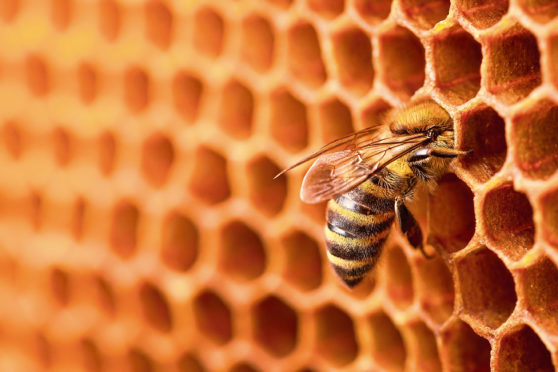
Buzzing around our garden to collect their pollen, bees are miraculous little creatures with many hidden talents.
Here, Alison Bell, the Queen Bee (or operations manager) at Plan Bee Ltd, tells Alice Hinds the Honest Truth about the stripy, and vitally important, insects
How did the idea for Plan Bee come about?
Plan Bee was founded to make people as enthusiastic about bees and pollinators as we are.
It is commonly known that pollinators are in decline; there are a number of factors for this, but one reason is that we have all lost the connection to where our food comes from.
Before sugar was the sweetener of choice, households may have kept beehives to bring a little sweetness into their kitchen and to pollinate the food grown in their kitchen gardens.
In the age of convenience, a lot of young people don’t know where their food actually comes from and so we are using bees and beehives to reconnect communities back to locally and sustainably produced fresh food.
We work with schools and workplaces across Britain to provide homes and habitats for honey bees and wild pollinators.
Why are bees so important for our environment and ecosystem?
Pollinators are responsible not only for the food we eat but also for the clean air we breathe.
Bees and pollinators allow plants to reproduce and to produce shoots, roots, leaves and fruits for us, and for the animals we eat to consume.
It’s nice to know that the job we are doing in supporting bees is important for a healthy planet and people.
Do different bees produce different types of honey? And does their environment change how their honey tastes?
In Britain we only have one type of honey bee (Apis mellifera) but there are many different types of forage for bees to consume, and it is what the bees collect that determines the type of honey we will end up with.
It is our opinion that the best honey you will taste will be honey from a local beekeeper.
Another benefit of consuming local honey is that the pollen that causes your hay fever is what made your honey, so there is an antidote effect. A win for the beekeeper and a win for your health.
Does collecting honey harm the beehive?
The modern beehive, a moveable frame, was invented to address the issue of making honey production sustainable and kinder to the bees.
Bees collect pollen and nectar and convert it into honey.
Amazingly, it’s the only food we eat from insects and a super food that will never spoil.
The bees collect, produce and store honey for winter reserves, and often produce more than enough for their use as well as for us to ethically harvest and transfer to jars.
Do bees really die after they sting us?
A bee sting is a one-way journey in a way; a worker bee has a barbed stinger, that once stuck, isn’t coming out. When a bee stings the stinger, poison and parts of the bee’s internal organs are all pulled out and left behind, killing the bees.
It is not a pleasant end for the bee, but shows the commitment to protecting the hive. It also demonstrates that the last thing a bee wants to do is sting you. A honey bee is the only bee that dies after stinging, so it is important to not deliberately upset the bee.
Are there plants we can grow to encourage bees to come into our garden?
Just like your diet, the more variety in a bee’s diet the better nutrition it will have, so it is really important that we provide an abundance of mixed native wildflowers.
A good quality wildflower mix is a great investment to make whether it is for your back garden, a local school’s or your workplace.
We spend a great amount of time working with schools and businesses to increase wildflower planting to benefit all bees and pollinators.

Enjoy the convenience of having The Sunday Post delivered as a digital ePaper straight to your smartphone, tablet or computer.
Subscribe for only £5.49 a month and enjoy all the benefits of the printed paper as a digital replica.
Subscribe